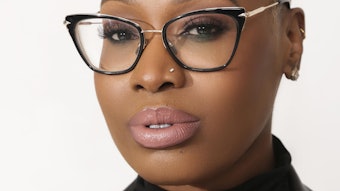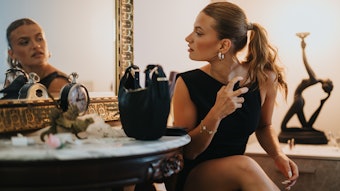The four elements. They are essential to life itself, and new findings from Mintel show how three of them—earth, water and air—are becoming more and more commonplace in today’s beauty industry as the market goes back to basics.
Earth: Where There’s Muck, There’s Brass
At first sight, earth appears an unpromising source of cosmetic beauty. That’s far from the case, however. Muds and clays have traditionally been used by women around the world for detoxifying and cleansing face masks, and now beauty companies are carefully selecting different colored clays from sources such as the Amazon basin, the Tuscan hills and the plains and rivers of India for their purifying, protective and anti-aging properties.
KeSari’s Pore Minimizing Indian Clay Masque is a good example. Inspired by Indian bridal traditions, this U.S. company created the clay-based mask to cleanse pores, remove dirt and impurities and lift toxins from the skin. However, while clays and muds are usually seen in facial skin care and body care products, they are also used in hair care and color cosmetics. U.S. niche brand Tarte, for example, added Amazonian clay to its limited edition Collection Palette, inspired by the True Blood television series.
Volcanoes have come under the spotlight too, recently. Formulators have found a rich seam of skin-vitalizing minerals in the muds on the slopes of volcanoes, as well as exfoliating and toning sand. These are appearing in premium skin and body care products, as well as spa brands. Volcanic Ash Mud Mask from Sella Cosmetics is said to help fight against UV damage and repair sebaceous glands, as well as providing anti-aging, anti-acne, anti-wrinkle and anti-blemish action.
Carbon is also in focus. After a brief initial flurry of activity, manufacturers shied away from fullerenes in the face of consumer anxiety, but Asian brands have brought them back into the spotlight, and Western brands are now following suit. Initially selected for their powerful anti-free radical activity, fullerenes are now being combined with whitening ingredients and high-tech actives such as epidermal growth factor (EGF) and stem cell extracts to present global anti-aging skin care. That most emblematic Asian product, the sheet mask, exemplifies this combinatorial approach. White Reviving Skin Radiance Mask Sheet from Natural Sciences Skin Solution combines fullerenes with platinum to form a Skin Renewal Complex, while niacinamide, baobab extract and Fucogel-1000 are said to brighten, reinforce and moisturize the skin.
Most recently, fullerenes are riding the BB wave, adding an extra touch of skin conditioning while claiming to combat the appearance of dark spots in other formulations. Japanese makeup brand Nanocé has developed BB Sorbet Foundation, a spray foundation that promises to cool the skin, tighten the pores and refine the skin texture. Enriched with collagen as well as fullerene, the product blurs the line between BB creams and tinted moisturizers more than ever.
Vivienne Rudd, senior European beauty analyst at Mintel, comments, “Research into new materials from Latin America, Eastern European lakes and shorelines and the deserts of Asia will no doubt yield more earthly elements for the cosmetics of the future.”
Water, Water Everywhere
While aqua is more often than not the first ingredient to be listed on product labels, the source of the water has become a claim in its own right.
This is nothing new in Europe, where brands such as Avène, Vichy and Biotherm have based their skin care ranges on thermal spa waters, rich in minerals and oligo elements, which are said to nourish the skin and help it retain its youthfulness. However, newer brands are emerging in Asia that use thermal waters from celebrated Japanese sources. Chiefly found in moisturizers and lotions, these spa waters are now finding their way into new formats. Three’s Balancing Lotion Mask, for example, contains carbonated spa water as well as botanical water, and claims to regulate the skin’s moisture and oil balance, keeping it refined, translucent and smooth.
Coastal waters are also being plumbed for their minerals and trace elements, spearheaded by the algae-rich Brittany waters but more recently joined by waters taken from the depths of the Arctic and Pacific Oceans. Kosé’s Sea’s Dew face lotion combines the best of both worlds, combining deep sea water and spa water to offer regenerative properties.
Inland waters also have a part to play. Initially, products talked about mineral-rich water from Icelandic lagoons, but formulators are now also turning to warmer sources such as Polynesian lagoons, fortified by coral reefs. Nature Republic by Nature’s Homme Toner, for example, contains purified lagoon water found in Polynesia’s green coral reef area and is said to revitalize and restore dry and tired skin by replenishing its nutrient and moisture levels.
Even so, there are also new sources of cold water, chosen for their purity, which is where Arctic and Alpine springs and glacial waters come into the picture. Lumene, for example, poised on the edge of the Arctic Circle in Finland, has formulated Arctic spring water in its Luminous Touch Makeup. As a result, says the company, the foundation is rich in minerals such as calcium, and moisturizes and protects the skin.
And then there are the products that use water as a starting point. Providing a bridge between Mintel’s Nutribeauty and Deconstruction trends, these products offer holistic and allude to beauty claims. For example, MiO Liquid Water Enhancer from Kraft provides 24 servings in an eight-ounce bottle and promises a zero calorie but fruity drink, while Panablue’s Sure Beauty Water is said to have four times more minerals than standard water and is described as the deepest sea mineral water in the world.
“So, while some restaurants have offered menus of mineral waters from around the world for some time, the beauty industry has now come on board too. Next stop, cloud juice, otherwise known as rain water?” wonders Rudd.
Air: Breathing Fresh Life into Skin and Hair Care
There has been a steady rise in the number of beauty products that mention the word oxygen. This has gone beyond simple use of the term in product names to imply freshness and energy, and now reaches into the formulation itself.
This Mintel trend concentrates on products that promise to deliver oxygen to the skin cells, going beyond more generalized claims of improving oxygenation. The use of oxygen in delivery systems was started by premium facial skin care brands in the U.S., Europe and Asia, but has now been taken up by masstige and mass market brands, recently migrating from facial skin care to body care products.
Similarly, oxygen-related claims are also on the move. The latest oxygen-related claims refer to combating the effects of reactive oxygen species (ROS), improving the energy of cutaneous tissues, lasting storage of oxygen in the deeper layers for controlled energy release, and increasing elasticity, skin brightness and youthfulness.
Lancer, for example, has introduced Cleanse Extremely Pure Cleanser and Nourish Am/Pm Nourishment Cream, a gentle foaming cleanser and anti-aging treatment that feature the company’s CRT Oxygen Technology Liposome complex. This is said to help provide oxygenation to the skin cells, while preventing ROS. Pupa’s Reshaping Salt Scrub, meanwhile, contains active energy to provide energy to the cutaneous tissues.
Oxygen claims are also showing up in growing numbers in color cosmetics. In contrast with skin care, brands in the makeup space are largely mass market. Bourjois, for example, has incorporated oxygen-rich chorophyll into its Bio Détox Perfecting Powder and Foundation. The company says this delivers oxygen to enhance the complexion and filter out pollution. The baton has also been taken up by Oriflame, whose Oxygen Boost Foundation claims to revitalize and brighten the complexion thanks to oxygenating brown algae, while Rimmel’s Match Perfection contains an oxygen complex that is said to let the skin breathe.
Finally, in contrast, the use of oxygen in hair care products appears to have plateaued. The claim is used primarily in treatments that claim to help minimize hair loss. Russian direct sales company Faberlic’s Oxygen Repair Hair Serum contains the Novaftem-O2 complex that features in its skin care products. Here, it claims to strengthen the hair roots and oxygenate the bulb.
However, soap and shower products are beginning to take up the slack. Here, oxygen is used to add a sensation of activity or exfoliation to formulations such as Olay’s Pristine Moisturizing Body Wash with Microbeads and Saffron Spa Moisturizing Oxygenous Active Bath Soap from Genaiesa, a Chinese brand.










